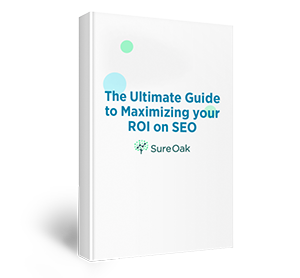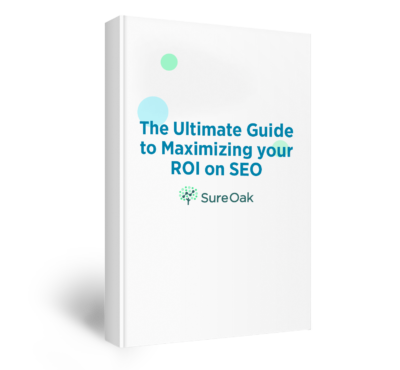Search engine optimization (SEO) is a crucial component of any digital marketing strategy. However, not all niches are created equal when it comes to SEO. Some industries are more competitive than others, which means ranking well on search engine results pages (SERPs) and reaching your target audience can be a challenge.
If you are operating in a competitive industry, you need to implement advanced SEO strategies that can help you stand out from the crowd. In this article, we’ll share 15 advanced SEO strategies in highly competitive markets, as well as some bonus SEO tips for e-commerce businesses.
What Are the Most Competitive SEO Industries?
An industry can be classified as competitive for SEO if many businesses within the industry carry out digital marketing. As a result, search engine results pages will be full of links to numerous different businesses within the same niche, making it hard to rank your own website.
Some of the top SEO competitive industries include:
- Legal services
- Health and wellness
- Finance and insurance
- Real estate
- Education
- Travel and tourism
- E-commerce
There are thousands of businesses within these niches, and they’re all trying to reach their audiences online. The high saturation of these niches is not the only factor that makes them competitive. They also have longer user journeys required to reach conversions. Additionally, they may require more brand trust from the consumer, which is difficult to cultivate in a sea of options.
To succeed in these niches, you need to have a deep understanding of your target audience and your unique value proposition that makes you stand out. It’s then essential to deploy more advanced SEO techniques to get your website to the top of search results pages.
15 Highly Customized SEO Campaigns for Competitive Niches
To reach your business goals in a saturated niche, you’ll have to go beyond the basics. Here are 15 advanced SEO strategies in highly competitive markets:
1. Elevating User Experience for SEO Success
User experience (UX) is a key factor that affects your SEO performance. Google considers various UX signals, such as page speed, mobile-friendliness, site security, and core web vitals, to rank your website. Moreover, UX also influences user behavior on your site, including the bounce rate, session duration, and conversion rates, which subsequently impact your SEO.
You can elevate your UX to optimize your search engine rankings in a few simple yet crucial ways. First, make sure to optimize your site speed by using tools like PageSpeed Insights to identify any issues that are slowing you down. Additionally, ensure your site is mobile-friendly to account for the large portion of mobile phone users worldwide. You should also obtain an SSL certificate to secure your website, showing search engines that it is safe to visit.
2. Aligning Content With Search Intent
Search intent is the purpose behind a user’s search query, and it can be categorized into four main types: informational, navigational, transactional, and commercial intent. Aligning your content with search intent means creating content that matches user expectations and provides relevant information. This includes only using keywords and phrases that align with the search intent of the user. An example of not following search intent is using a click-bait title to draw in readers, and then having content that does not reflect that title.
3. Implementing Topic Clusters for Cohesive Content Strategy
Topic clusters are a way of structuring your content around a core topic and its related subtopics on your website. This involves creating three elements: a pillar page, subtopic pages, and internal links.
A pillar page is a broad page that covers the core topic comprehensively and links to the subtopic pages. The subtopic pages are the narrow and specific pages that cover the subtopics in detail and link back to the pillar page. Internal links connect the pillar and subtopic pages to create a coherent structure.
Using the structure of topic clusters helps to boost your SEO by enhancing your site structure and navigation, improving your site’s crawlability, and increasing the time users spend on your site.
4. Optimizing for Featured Snippets
Featured snippets are selected search results that appear at the top of the SERPs in a special box. They provide a quick, accurate answer to the user’s query, along with a link to the source page. Being featured in these snippets can greatly increase your visibility on search engines since you’re right at the top.
Make your page optimized for featured snippets by using keyword research tools to identify the search words and phrases in your niche that trigger featured snippets. Then, incorporate these phrases in your content, followed by useful information. For example, include a direct question that users frequently ask, and answer the question with accurate information or data points.
5. Strengthening Site Structure Through Effective Internal Linking
Internal linking is the practice of linking one page of your website to another page of your website, creating a connected web of navigation. Internal linking helps to improve your site structure, shows authority in your niche, and keeps users on your website longer.
Having an effective internal linking strategy means using relevant and descriptive anchor texts to link your destination(s). Your links must be placed where they make sense and naturally flow in the content, rather than randomly throwing them in the mix. Additionally, make sure to regularly update your internal linking network to ensure they have relevant destinations and no broken links.
6. Unleashing the Potential of Long-Tail Keywords
Using long-tail keywords is a powerful strategy for standing out on SERPs. Long-tail keywords are longer phrases (3+ words long), more specific, and less competitive than short-tail keywords. They usually have a lower search volume, which results in less competition and higher conversion rates.
For example, while “red shoes” is a short-tail keyword, “red leather loafers for fall” is a long-tail keyword. Ranking for competitive keywords like the first one is more difficult, while the latter is more doable. Assessing which specific phrases your target audience may be searching for can help you reach them faster, particularly in more competitive markets.
Your best options for finding the right long-tail keywords in your niche are keyword research tools. Tools such as Google Keyword Planner give you data on any keyword or phrase of your choosing, showing you their competition levels and search volume.
7. Enhancing Search Appearance With Schema Markup
Schema markup is a type of structured data that helps search engines understand and display your content better. Optimizing your schema markup can enhance your search appearance by adding ‘rich snippets’ of information like ratings, reviews, images, and prices next to your site in the search results.
To enhance your search appearance with schema markup, generate and implement schema code using tools like Google’s Structured Data Markup Helper or Bing’s Markup Validator Tool. After implementing these snippets of code, test your results using Google’s Rich Results Test to see how your site appears in SERPs.
8. Gain Backlinks for Reputable Industry Sources
Backlinks are links from other websites that point to your website. They are one of the most important ranking factors for SEO, as they indicate the trustworthiness, popularity, and relevance of your website within your niche. Having backlinks from other reputable websites proves the legitimacy of your site even further. Plus, it helps you gain more traffic from websites that are already popular.
Building a strong backlink profile is a time-consuming yet rewarding strategy. This process involves creating high-quality content that other sites will actually want to reference. Then you’ll need to reach out to other players or leaders in your niche to have your link featured on their site(s). Connecting sites with backlinks is often a mutually beneficial strategy, but remember to follow the best practices for reaching out to other industry professionals.
9. Going Beyond Basics With Advanced Keyword Research
Keyword research is the foundation of any SEO strategy, as it helps you understand what your target audience is looking for and how you can optimize your content for them. Yet, to reach success with your SEO strategy, you’ll have to go beyond basic keyword research.
Advanced keyword research will require using top tools like SEMrush, Moz, and Google Keyword Planner. Use these tools to find long-tail phrases that have lower search volume than broader keywords. Additionally, you can filter SERPs to view newer competitor pages that are ranking high and see what keywords they are utilizing to do so. Then, incorporate these phrases naturally throughout your own content.
10. Boosting SERP Presence via Influential Social Signals
Your performance on social media can also have a direct impact on your SERP rankings. Social signals such as likes, shares, comments, and mentions affect how users view your brand and impact how many users will visit your website pages.
For example, if you have a social media page with 100k+ followers, you have the advantage of being able to share your website pages with more people. The more people who interact with your website, the higher the ranking you’ll receive on SERPs. This creates a positive cycle of boosting SEO, which can then boost social media followers as well.
11. Perfecting Mobile Optimization for Today’s User
Mobile optimization is essential for SEO, as Google uses mobile-first indexing to rank your website. Moreover, mobile optimization can help you cater to the growing number of mobile users who use their devices to search for information, products, and services.
To perfect your site for mobile use, choose a responsive website design that adapts to different screen sizes and orientations. Having small to medium-sized images and avoiding pop-ups can also improve your mobile UI. Then, use tools like Google Chrome’s Lighthouse to test your website’s mobility and make any adjustments.
12. Gaining an Edge With In-depth Audience Analysis
To effectively reach your target audience, you need to know who they are in depth. Conduct a thorough audience analysis to assess your potential customer’s demographics, interests, behavior, and preferred devices and browsers. You can even request direct feedback from your audience on their preferences and views via email or social media polls and questionnaires.
13. Expanding Your Brand’s Reach With Multi-Channel Marketing
Multi-channel marketing is the practice of using multiple channels to reach and engage with your audience. Capitalizing on multiple channels can help you increase your brand awareness and reach, and as a result, increase the traffic to your website.
Identify the digital platforms that are most relevant to your niche and audience (for example TikTok for Gen-Z audiences). Then, create quality content that aligns with the formats and trends of those platforms. Include a call-to-action (CTA) in the majority of your posts that directs them to a desired website page.
14. Try Video SEO for Enhanced Engagement
If your content includes videos, you’ll need to optimize them to help your site appear in search results pages. Video SEO is the process of doing just that. Video SEO involves both videos embedded in your website’s content, as well as video posts on platforms like YouTube, TikTok, and Vimeo.
To optimize your videos, create titles, descriptions, tags, and thumbnails that use your target keywords. Additionally, make sure your videos are high-quality and engaging so that users watch them longer. This is something video-platform algorithms favor. Finally, as a part of multi-channel marketing, promote your new content across other channels to drive your views.
15. Focus on Leveraging Artificial Intelligence in SEO
The rise of AI technology is having a major impact on SEO, and it’s essential to learn how to use it to your advantage. For example, AI-powered search engines are making search results much more tailored and relevant to individual users. Thus, SEO marketers will need to focus even more on reaching those niche audiences, such as by utilizing specific long-tail keywords.
AI is also impacting SEO in the following ways:
- Improved keyword research and optimization: AI algorithms are improving keyword research tools to help SEO marketers find and target efficient phrases that bring results.
- Predictive keyword suggestions: AI can analyze data to forecast keyword trends, helping marketers stay ahead of the curve and on top of SERPs.
- Voice search: AI-powered voice search technology is changing the way people search for information. SEO professionals can adapt their keyword strategies to voice query formats to boost their pages.
Bonus: How Do You Approach a Competitive eCommerce SEO Market?
E-commerce is one of the most competitive industries for SEO. There are thousands of businesses– large and small– looking to reach customers online, making it hard to stand out amongst the competition. Here are some ecommerce SEO strategies to help you land on top:
1. Product Page Optimization
Product page optimization is the process of optimizing your product pages for both search engines and users. Optimizing your product pages means using relevant keywords in your titles, descriptions, URLs, and meta titles and descriptions. Additionally, your product pages must be optimized for mobile use to reduce bounce rates, which affect your SERP rankings.
2. Effective Use of Customer Reviews and Ratings
With a sea of options to choose from online, many consumers rely heavily on ratings and reviews. This is particularly the case for smaller businesses that have less authority and credibility. Make sure to incentivize your customers to leave detailed reviews, and allow them to appear on your product pages for full transparency. Search engines like Google also analyze this information and assess whether your site is legitimate.
3. Harnessing the Power of Structured Data for Rich Snippets
Structured data makes it easier for search engines to understand what your website and product pages are about. Structured data can be added to your pages using schema code from tools like Schema.org. Adding this data makes your page appear “richer” on search results, meaning it has more snippets of important information. This is particularly important for e-commerce sites, as customers are looking for as much information as possible to make informed decisions.
4. Invest in Seasonal SEO Strategies for eCommerce Sales Peaks
Seasonal SEO is the practice of optimizing your e-commerce site for seasonal events like holidays, seasons, and other events like Cyber Monday. Seasonal SEO aims to capitalize on the increased demand, traffic, and conversions during these periods. Identify the seasonal events that your business could capitalize on, and prioritize SEO strategies around these high-conversion times.
5. A/B Test Your Site and Improve Its Conversion Rate
A/B testing is the process of comparing two versions of a web page or element to see which one performs better. This testing strategy is essential for improving the performance of your site, and ultimately deciding which elements result in more conversions. Use tools like Search Pilot, VWO, and Optimizely to conduct your A/B tests.
Key Takeaways
SEO is a dynamic and competitive field that requires constant learning and adaptation. Implementing advanced SEO strategies in highly competitive markets can help you see results on search engines—literally.
As SEO continues to adapt to new technologies like AI and become more competitive, it can be even more challenging to see results from your efforts. Luckily, the SEO experts at Sure Oak are here to help.
Sure Oak is a full-service SEO agency offering services in keyword research, SEO game planning, on-page optimization, link building, content writing, and all other aspects of the SEO process. Our expertise can help grow your business online, no matter how competitive your industry is.
Contact us for a free strategy session today to get started, and see how far your business can grow.




